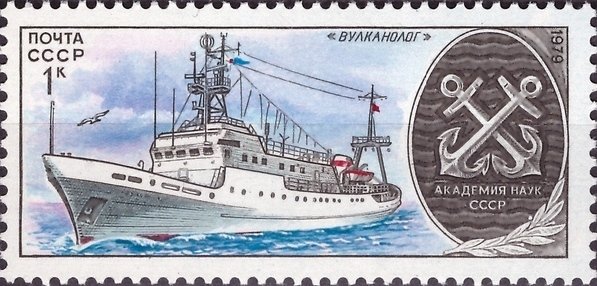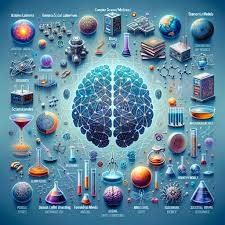Stamp: Vessel "Vulcanolog" (it means "Volcano researcher") (Soviet Union, USSR 1979)
Vessel "Vulcanolog" (it means "Volcano researcher") (Soviet Union, USSR 1979)
25 December (Soviet Union, USSR ) within release Ships goes into circulation Stamp Vessel "Vulcanolog" (it means "Volcano researcher") face value 1 Russian kopek
| Stamp Vessel "Vulcanolog" (it means "Volcano researcher") in catalogues | |
|---|---|
| Michel: | Mi:SU 4906 |
| Yvert et Tellier: | Yt:SU 4652 |
Stamp is horizontal format.
Also in the issue Ships:
- Stamp - Vessel "Vulcanolog" (it means "Volcano researcher") face value 1;
- Stamp - Vessel "Professor Bogorov" face value 2;
- Stamp - Vessel "Ernst Krenkel" face value 4;
- Stamp - Vessel "Cosmonaut Vladislav Volkov" face value 6;
- Stamp - Vessel "Cosmonaut Yuri Gagarin" face value 10;
- Stamp - Vessel "Academik Kurchatov" face value 15;
Stamp Vessel "Vulcanolog" (it means "Volcano researcher") it reflects the thematic directions:
A ship is a large watercraft that travels the world's oceans and other sufficiently deep waterways, carrying passengers or goods, or in support of specialized missions, such as defense, research and fishing. Historically, a "ship" was a sailing vessel with at least three square-rigged masts and a full bowsprit. Ships are generally distinguished from boats, based on size, shape and load capacity.
Science is a systematic discipline that builds and organises knowledge in the form of testable hypotheses and predictions about the universe.Modern science is typically divided into two or three major branches: the natural sciences (e.g., physics, chemistry, and biology), which study the physical world; and the behavioural sciences (e.g., economics, psychology, and sociology), which study individuals and societies.The formal sciences (e.g., logic, mathematics, and theoretical computer science), which study formal systems governed by axioms and rules, are sometimes described as being sciences as well; however, they are often regarded as a separate field because they rely on deductive reasoning instead of the scientific method or empirical evidence as their main methodology. Applied sciences are disciplines that use scientific knowledge for practical purposes, such as engineering and medicine
A volcano is a rupture in the crust of a planetary-mass object, such as Earth, that allows hot lava, volcanic ash, and gases to escape from a magma chamber below the surface. The process that forms volcanoes is called volcanism.
A symbol is a mark, sign, or word that indicates, signifies, or is understood as representing an idea, object, or relationship. Symbols allow people to go beyond what is known or seen by creating linkages between otherwise very different concepts and experiences. All communication (and data processing) is achieved through the use of symbols. Symbols take the form of words, sounds, gestures, ideas, or visual images and are used to convey other ideas and beliefs. For example, a red octagon is a common symbol for "STOP"; on maps, blue lines often represent rivers; and a red rose often symbolizes love and compassion. Numerals are symbols for numbers; letters of an alphabet may be symbols for certain phonemes; and personal names are symbols representing individuals.




